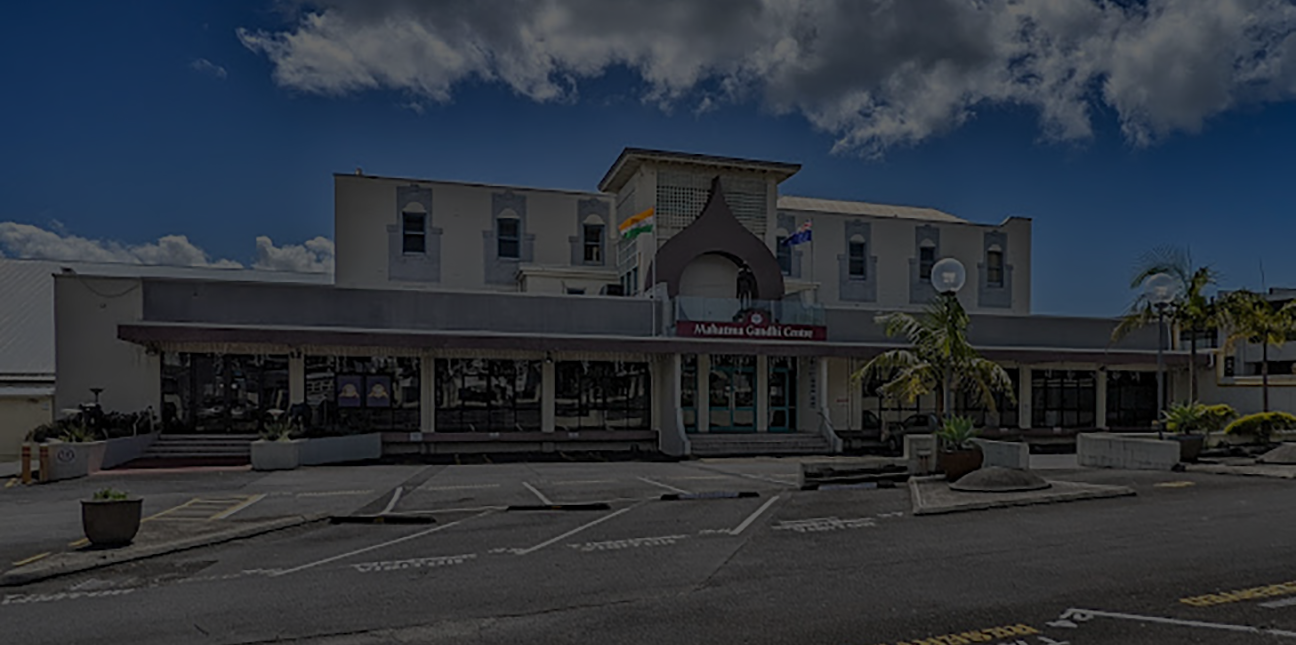

The Auckland Indian Association foundation members came together in the early 1900’s having travelled from India by sea to discover the beauty land of the long white cloud. Having passed through Australia and the Islands on the boat journey’s their final destination was to be on the other side of the world Auckland, New Zealand. Our founders had banded together united and supporting each other and the community. During this time the small number of Indians of various cultures, religions coming from various states and regions in India. These brave individuals became family and they met regularly for support and to learn from one another.
We continue to honour this today, coming together at Eden Terrace Auckland, to support and to maintain our Indian belonging and heritage, through the Auckland Indian Association and now may other groups that have formed to support one another throughout Auckland, and Aotearoa. The foundation years (early 1920’s) required much learning, development and acceptance. The passion and pride of each of these individuals blossomed, and in 1938 through voluntary service of these early Indian settlers, The Auckland Indian Association officially become an Incorporated Society (AIAI). Read More
For over 90 years we have grown the non-profit society with the unselfish service, support and hard work, required and given by many like-minded volunteers, of all ages. To this day here in Auckland, our Society’s objectives are to: Maintain our Indian heritage and culture, and to support the Indian and wider community here in Auckland, New Zealand. Cultural celebrations, education, health expos, and concerts are hosted at the Auckland Indian Association Inc. Mahatma Gandhi Centre and are thankfully supported by local councils, schools, businesses and sponsors. We support the community, and wish to leave lasting memories of the Mahatma Gandhi Centre and The Auckland Indian Association, to all and generations to come.
Our founders had banded together united and supporting each other and the community. During this time the small number of Indians of various cultures, religions coming from various states and regions in India. These brave individuals became family and they met regularly for support and to learn from one another. We continue to honour this today, coming together at Eden Terrace Auckland, to support and to maintain our Indian belonging and heritage, through the Auckland Indian Association and now may other groups that have formed to support one another throughout Auckland, and Aotearoa.
The foundation years (early 1920’s) required much learning, development and acceptance. The passion and pride of each of these individuals blossomed, and in 1938 through voluntary service of these early Indian settlers, The Auckland Indian Association officially become an Incorporated Society (AIAI). For over 90 years we have grown the non-profit society with the unselfish service, support and hard work, required and given by many like-minded volunteers, of all ages. To this day here in Auckland, our Society’s objectives are to: Maintain our Indian heritage and culture, and to support the Indian and wider community here in Auckland, New Zealand.
Cultural celebrations, education, health expos, and concerts are hosted at the Auckland Indian Association Inc. Mahatma Gandhi Centre and are thankfully supported by local councils, schools, businesses and sponsors. We support the community, and wish to leave lasting memories of the Mahatma Gandhi Centre and The Auckland Indian Association, to all and generations to come. Read Less

During the last month there’s been a lot of talk about racism in New Zealand. Auckland City’s Ethnic People’s Advisory Panel organised a conference to discuss whether racism impacted on Auckland as a diverse city and a majority (76%) of television viewers voted Yes, that we are a racist country in a survey run for TV3’s new show The Vote. How is racism impacting on the Indian communities living in Aotearoa New Zealand? There has been a lot of talk about structural racism and institutional racism but what was it like when Indians first started arriving here more than 100 years ago. Read More
Ten years ago I was at a function at Pukekohe where the Pukekohe Indian Association was celebrating the 50th anniversary of their community centre, the Nehru Hall. In her address, the town’s mayor at that time, Heather Maloney, apologised for the “past injustices” that the Indian community encountered during the early days. Indians had been settling in Pukekohe since the early 1920s to take up jobs in the market gardens. They went on to lease land and eventually buy properties, working hard to become nationally recognised market gardeners. Maloney said until recent times (late 1950s) Indians were not allowed in the dress circles of cinemas and most barbers would not cut their hair. No mention was made of the apology in a report in the Franklin County News but it did quote the mayor as saying that the Indian community were to be admired for the way they “overcame the various obstacles”.
The Franklin County News was formerly the Franklin Times, which served the Franklin District and Pukekohe Borough. To put it mildly, the Franklin Times was extremely racist in its views on Indians (and the Chinese) when they first started to settle in the area. This is an extract from the Franklin Times in its lead story titled “Our Asiatics” on 18 January 1926. “The serious danger with which civilisation is threatened does not come from actual savages or even from those of a higher plane, who may be called barbarians. The peril is from those dark-skinned races which have long ago put on a thin veneer of semi-civilisation, but have remained for centuries without rising any higher- are constitutionally incapable of rising any higher. No better example of this class of people can be found than the Hindus. Mentally and morally incapable of real civilisation they many centuries ago, rose as high on the human plane as they had it in them to rise, and have remained stationary ever since.”
The article went on to say that the “invasion of Asiatics” into civilised society could not but prove an unmitigated disaster if allowed to continue unchecked. That it upset all living standards and socially demoralised the existing population. That the worst was yet to come when inter-breeding would happen resulting in “mongrel off-spring, unable to bear the burden of civilisation.” The article ended with the remarks that the ruin of a few hundred industrious farmers was a mere trifle compared to the future degradation of our race if the peaceful penetration of these Asiatics was not stayed.
Instances of bigotry and prejudice persisted during these years all over New Zealand.. The country had a White New Zealand Immigration policy. The residents in Pukekohe were mainly potato farmers, mostly British, who felt threatened by the small number of Indians who began to settle there and start leasing land. This created economic competition for the white farmers. Indians first began to settle there in dribs and drabs from as early as 1911. They were attracted to the area as labourers for white farmers. But following World War 1 along with the Chinese, Indians started to lease small plots of land and grew vegetables for sale. Hostility towards them increased. They were constantly accused of undercutting Europeans because they could work longer hours, accept lower rates for pay, and maintain a far lower standard of living than that of any European.Faced with this economic competition, the European farmers decided to form the White New Zealand League in 1925. Supported by the shopkeepers, the League drummed up xenophobia about an impending Asian invasion and the dangers of racial breeding. It started advocating that land should not be sold or leased to the Asians. It wanted Asian immigration to be banned and some members even demanded the repatriation of Asians resident in New Zealand.
Considerable publicity was given to the activities of the White New Zealand League. In other issues, the local paper claimed that the Indian migrant was a ‘pariah’ and an ‘outcast’ and a degraded species, compared to the “true” Aryans of India. The morality and behaviour of the small number of Indians in the area also came under focus. The paper also once quoted the local mayor as saying that he did not know how it was that a “darkie” was able to make the land produce more than a white man. Other newspapers at the time which endorsed the League’s aims were the Auckland Star and New Zealand Herald.
The constant barrage of inflammatory articles kept appearing in the Franklin Times against Indians in the 1920s. There were some Indians who wrote letters to newspapers regarding their opposition to the activities of the New Zealand White League. A frequent contributor of letters to the newspapers was Jelal (Mick) Natali. He arrived to Auckland in 1920 from Gujarat and could read and write English fluently, unlike most their fellow countrymen who made their home in New Zealand. He wrote about discrimination against Indians in the country arguing that Indians were British subjects and should be treated as such. In a letter written on 22 July 1922 in the Auckland Star he drew attention to the treatment between the white and dark skinned people at the Hobson Street Tepid Baths. He complained that all except one bath was reserved for white people. His appeal to the City Council for equality of treatment received scant consideration. He also wrote many letters defending Indian’s right for independence.
By the end of the 1920s there wasn’t much support in terms of subscribing members for the White New Zealand League. Despite this on 29 May 1929 The Franklin Times believed that the League’s influence was greater than that indicated by active membership. In 1937 the Registrar of Incorporated Societies struck it off. But racism continued in Pukekohe and other parts of the country. The New Zealand Truth highlighted some of these incidents in an article on 3 October 1961 called Pukekohe ‘a town with a colour bar’ .It quoted a Maori social worker as saying it was “the most segregated-minded town he has ever been in.” Pukekohe was referred to as the Little Rock, a town in Southern United States where racism was rife against African Americans.
The result of the hostilities and bigotry was that the Indian community kept a low profile. It also prompted them to form organisations to fight racism and help them safeguard their rights and privileges. The Auckland Indian Association was formed in 1920. Many Pukekohe residents were also members until they formed their own association in 1937. Prior to that there were too few members of their community to form a body. The Wellington Indian Association was formed in 1925 and a County Section at Taumaranui in 1926. In response to the activities of the White New Zealand League, the Auckland, Wellington and Taumaranui Associations formed the New Zealand Central Indian Association on July 26, 1926. Among the objectives were to demand full benefit of British justice in New Zealand, to promote better understanding between Indians and other New Zealanders, to monitor laws that would affect Indians, to promote advancement of education among the New Zealand Indian community and to educate and enlighten the public on matters concerning Indians and India. Its constitution stated that the association seek the redress of wrongs affecting Indians in New Zealand. According to Dr Jacqueline Leckie in her book They Sleep Standing Up; Gujaratis in New Zealand, “Although they were conscious of ethnic, religious and caste difference, they identified collectively when faced with discrimination by the wider New Zealand society. Indian associations, organised according to regions in New Zealand, were a formal channel for assessing identity and defending Indians against racism.”
This article is a small slice of what racism was like for an Indian in the country in the early days of migration, despite the small population of Indians at that time in the country. There were only 671 Indians recorded during the 1921 census and 987 in 1926.
Since the revision of the immigration regulations in 1987, removing discriminatory provisions against immigration from Asia, Indians now form a significant part of the New Zealand population. According to the census in 2006 there were 105,000 Indians recorded. There probably are now 140,000 Indians resident in the country. The last census figures are yet to be released.
Anti-Asian hysteria was once again revived in the 1990s and 2000s and reported almost daily in the New Zealand media. The use of the words “influx” and “invasion” by the media was the same language used by the Franklin Times in the 1920s. A politician was quoted as saying that Asian immigrants were “bringing the third world to New Zealand.”(Sunday Star Times, 10 November 2002).
With the growth of the Indian population have come many challenges within the community. Many new migrants have been unable to find employment in the area of their qualification and skill, resorting to such jobs as driving taxis, working as service station attendants and turning to labour intensive businesses such as liquor shops, dairies, speciality shops, takeaway food stalls and restaurants. There are many Indians in professional occupations and also many Indians own small and medium enterprises in New Zealand.
The Indian community is at a stage where they have fought for equality and cultural respect. Despite many setbacks such as many who are seeking good jobs, they are well settled. The environment that the Indian community in Pukekohe lived in during the 1920s has changed. We now live in a totally different world of media and communications. The Franklin Times was indeed a powerful tool to spread the word of bigotry and prejudice against the Indian community. But we now have a media which is much more powerful. A media which has a big role to play to make life better in this country, for not only the Indian community, but also for all the communities living in New Zealand.
*Bharat Jamnadas is a former senior journalist in Fiji and former senior reporter/director for Asia Downunder (1994-2011). Read Less


